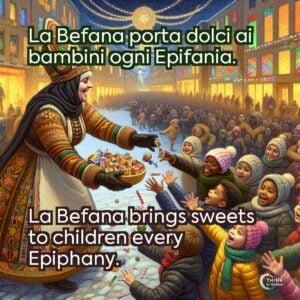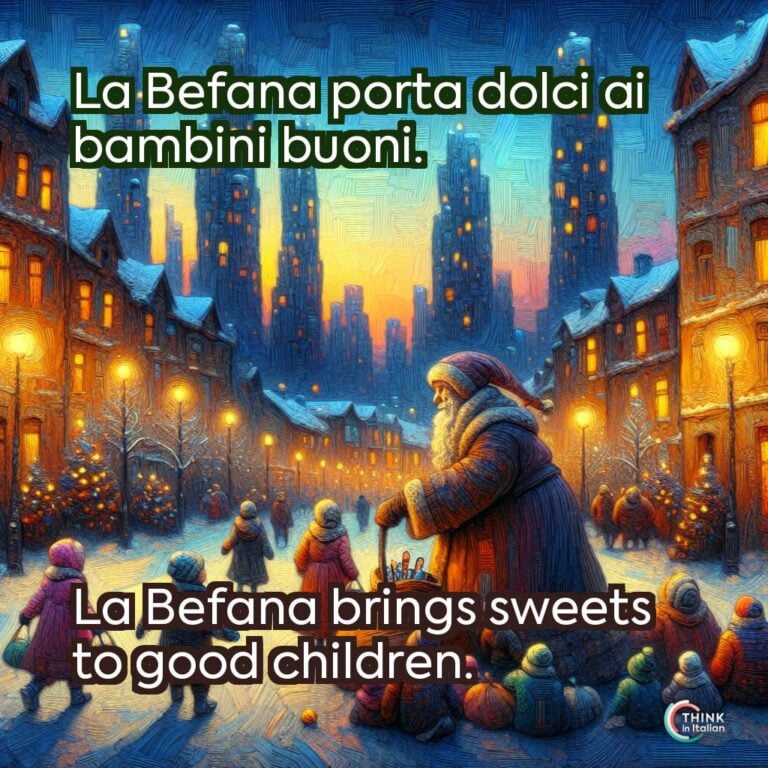Italian Folklore
The Origin of Italian Folklore
Italy is celebrated worldwide for its art, cuisine, and historical landmarks, but one of its most enchanting aspects is its rich folklore, with its blend of mythology, superstitions, regional legends, and symbolic traditions.
The Italian folklore originates in practices of ancient Etruscan, Roman, Greek, and even Celtic cultures, that blended tales of gods, spirits, and supernatural beings into their daily lives.
One of the earliest examples is the legend of Romulus and Remus, twin brothers raised by a she-wolf who founded Rome. This story dates back to the 8th century BCE and embodies Roman ideals of unity and strength.
With the advent of Christianity, many pagan traditions were adapted to align with the new faith, like Saturnalia, a Roman midwinter festival of feasting and gift-giving, that evolved into Christmas.
Regional Variations in Italian Folklore
Italy’s folklore is as diverse as its regions. For instance, the Sicilian legend of Colapesce tells of a boy who sacrificed himself to stabilize Sicily’s underwater columns, symbolizing resilience and devotion.
In Venice, ghost stories like the Phantom of the Canals reflect the city’s romantic yet mysterious atmosphere, while in Northern Italy, tales of the Benandanti – agrarian shamans who protected crops from witches – highlight the region’s connection to agriculture.
In Emilia-Romagna you can hear of the haunting story of Azzurrina, a ghostly girl who vanished from the Castle of Montebello, which captivates paranormal enthusiasts.
Italian Legends and Myths
Italian Legends
Among the most cherished is the tale of La Befana, the Christmas witch who visits children on Epiphany Eve, delivering sweets to the good and coal to the naughty.
According to the legend, she declined an invitation from the Three Wise Men to visit baby Jesus but regretted her decision and now searches for him annually, leaving gifts for children in hopes of redemption. Her story symbolizes generosity and second chances.
Rome’s Fountain of Trevi is another folkloric gem, tied to the superstition that tossing a coin into the water ensures a return to the city.
This tradition is rooted in ancient beliefs about water as a mystical portal, and continues to attract tourists worldwide. The money that is collected is donated to charity.
The Ferragosto Festival, celebrated on August 15th, originated as a Roman holiday decreed by Emperor Augustus to provide respite after the harvest season.
Today, it aligns with the Feast of the Assumption and features parades, feasts, and fireworks, bringing communities together to celebrate the height of summer.
Italian Myths
The Sirens of Capri are mythical creatures part woman and part bird or fish that are said to have inhabited the rocky shores of the island.
Their hauntingly beautiful voices lured sailors to their doom, as famously described in Homer’s Odyssey. To resist their deadly song, Odysseus plugged his crew’s ears with beeswax and tied himself to the mast.
Today, the myth symbolizes the allure and danger of the unknown, with Capri’s dramatic cliffs serving as a fitting backdrop.
The Tarantella is a traditional Italian dance. It has its origins in an old superstition: its frenzied dancing was believed to cure the venom of a tarantula bite, by expelling the poison.
Lake Como, known for its beauty, hides the darker legend of the Tarantasio, a dragon-like creature said to dwell in its depths. It embodied ancient fears of the unknown. Although the monster remains a myth, occasional reports of unusual disturbances in the lake keep the story alive.
Equally eerie is the tale of Azzurrina, a young albino girl who vanished from Montebello Castle in the 14th century. Her mother dyed her hair blue to hide her condition, earning her the nickname Azzurrina.
One stormy day, she disappeared without a trace, and her ghost is said to return each summer solstice, her cries echoing through the castle. This story continues to draw paranormal enthusiasts.
Learn More About Folklore in Italy
Exploring Italian folklore offers a deeper understanding of the nation’s culture and history. To immerse yourself in this enchanting world:
- Visit historical sites like the Castle of Montebello or the cliffs of Capri, where legends come alive.
- Participate in traditional festivals such as Ferragosto or Epiphany celebrations with La Befana.
- Read literary works inspired by folklore, such as Italo Calvino’s Italian Folktales.
Italian folklore is a living tradition that continues to inspire and connect people across generations. Whether you’re in Italy or exploring from afar, these tales offer a magical journey into the heart of Italian culture.








